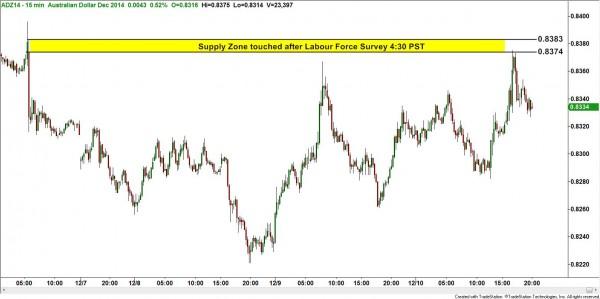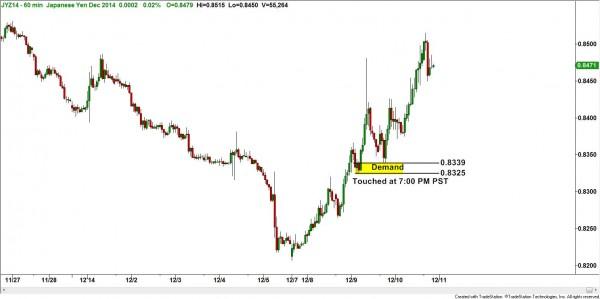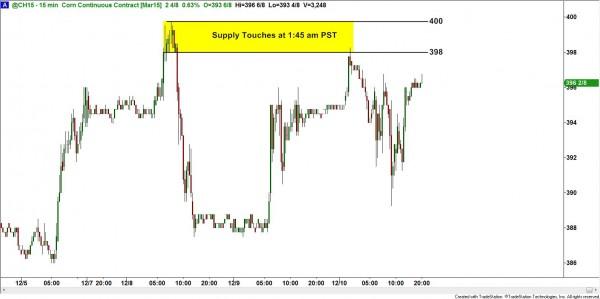For most investors, the preferred vehicle in which to engage in the financial markets are stocks, or derivatives related to this asset class. The most common of these would be mutual funds. More sophisticated investors will use Exchange Traded Funds for their trading and longer term investing.
These financial instruments are fine, but just like any other asset they carry the inherent risk of gaping (opening substantially higher or lower than the previous day close) from one day to the next. There are ways to mitigate this risk, but this is not what this article is about. Instead, we want to introduce readers to the markets that never sleep (except for the weekends).
I’m aware that some of you already know what Futures are, however, you may not yet be familiar with some of the attributes of the Futures markets that make them more appealing than stocks. There is one huge caveat though, since Futures assume a sizable amount of leverage, a trader that doesn’t exercise strict risk management skills will have a very short stint as a futures trader.
Along with the leverage, which, if exercised properly can be a tremendous attribute, there is the aspect of continuous trading. This means that these markets trade —for the most part— uninterrupted twenty four hours a day, five and a half days a week. The benefit to a trader engaged in this market is the vast amount of opportunities presented, at all hours of the day and night.
Unlike with stocks, where the window of opportunity is six and a half hours daily, there are no such constraints in the futures market. Granted, there are times when the markets will give us better opportunities than others. But for the most part, because the futures markets are Global, they will have the tendency to move throughout the day and night.
Below are three example of trades that touched entry, at what some would consider unconventional hours.
The last chart shows a corn supply level that provided a good short-term income shorting opportunity. As you can see by the annotations on the chart, it touched the supply zone in the middle of the night for those of us that reside on the West Cost of the United States (hence the PST time).
The other two examples are in the Currency markets. Specifically, the Australian Dollar and Japanese Yen which release most of their economic data early in the morning there. This translates into a late afternoon, early evening time zone here on the west coast of the United States. As we see, when the Australian government released their Labour survey report, which is equivalent to our Non-Farm Payrolls here in the States, the Aussie Dollar rallied into a nice supply zone right around 4:30 pm, giving a trader an attractive shorting opportunity. Similarly, the Japanese Yen hit its demand level for a long trade at 7:00 pm on the west coast.
Some of you might be thinking that you don’t have the time to be watching all the markets around the world, because like me, you don’t want to be glued to your computer, and also cherish your sleep. The good news is that if you identify the levels in advance, and are willing to assume the risk, you can simply place the orders and leave your computer. After the order is placed in the market we have to live with the two possible outcomes ( small loss, or profit target). This can only happen of course, if you have a low risk, high probability strategy.
In short, the futures market can be a great source of opportunity around the clock, Sunday through Friday, but only for those that know how the markets really work, and can execute a low risk strategy. If that’s not you, then my advise is to learn, before you start trading futures.
Until next time, I hope everyone has a great week.
This content is intended to provide educational information only. This information should not be construed as individual or customized legal, tax, financial or investment services. As each individual's situation is unique, a qualified professional should be consulted before making legal, tax, financial and investment decisions. The educational information provided in this article does not comprise any course or a part of any course that may be used as an educational credit for any certification purpose and will not prepare any User to be accredited for any licenses in any industry and will not prepare any User to get a job. Reproduced by permission from OTAcademy.com click here for Terms of Use: https://www.otacademy.com/about/terms
Editors’ Picks
EUR/USD retreats below 1.0700 as USD rebounds

EUR/USD lost its traction and retreated slightly below 1.0700 in the American session, erasing its daily gains in the process. Following a bearish opening, the US Dollar holds its ground and limits the pair's upside ahead of the Fed policy meeting later this week.
USD/JPY recovers toward 157.00 following suspected intervention

USD/JPY recovers ground and trades above 156.50 after sliding to 154.50 on what seemed like a Japanese FX intervention. Later this week, the Federal Reserve's policy decisions and US employment data could trigger the next big action.
Gold holds steady above $2,330 to start the week

Gold fluctuates in a relatively tight channel above $2,330 on Monday. The benchmark 10-year US Treasury bond yield corrects lower and helps XAU/USD limit its losses ahead of this week's key Fed policy meeting.
Week Ahead: Bitcoin could surprise investors this week Premium

Two main macroeconomic events this week could attempt to sway the crypto markets. Bitcoin (BTC), which showed strength last week, has slipped into a short-term consolidation.
Five Fundamentals for the week: Fed fears, Nonfarm Payrolls, Middle East promise an explosive week Premium

Higher inflation is set to push Fed Chair Powell and his colleagues to a hawkish decision. Nonfarm Payrolls are set to rock markets, but the ISM Services PMI released immediately afterward could steal the show.
RECOMMENDED LESSONS
Making money in forex is easy if you know how the bankers trade!
Discover how to make money in forex is easy if you know how the bankers trade!
5 Forex News Events You Need To Know
In the fast moving world of currency markets, it is extremely important for new traders to know the list of important forex news...
Top 10 Chart Patterns Every Trader Should Know
Chart patterns are one of the most effective trading tools for a trader. They are pure price-action, and form on the basis of underlying buying and...
7 Ways to Avoid Forex Scams
The forex industry is recently seeing more and more scams. Here are 7 ways to avoid losing your money in such scams: Forex scams are becoming frequent. Michael Greenberg reports on luxurious expenses, including a submarine bought from the money taken from forex traders. Here’s another report of a forex fraud. So, how can we avoid falling in such forex scams?
What Are the 10 Fatal Mistakes Traders Make
Trading is exciting. Trading is hard. Trading is extremely hard. Some say that it takes more than 10,000 hours to master. Others believe that trading is the way to quick riches. They might be both wrong. What is important to know that no matter how experienced you are, mistakes will be part of the trading process.



